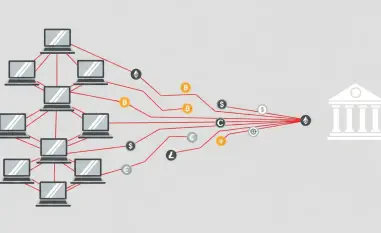Imagine a digital fortress, housing the sensitive data of tech giants like Cloudflare and Google Workspace, suddenly breached through a seemingly innocuous marketing tool. This scenario became reality with the recent Salesloft-Drift incident, a supply chain attack that exposed Salesforce data via stolen OAuth tokens. As cyber threats escalate in sophistication and scale, this breach serves as a stark reminder of the vulnerabilities lurking in interconnected software ecosystems. This roundup gathers expert opinions, critical analyses, and actionable tips from across the cybersecurity landscape to dissect the Drift breach, explore the surge in cyber risks, and offer strategies to fortify defenses against an ever-evolving threat environment.
Unpacking the Cybersecurity Crisis: The Significance of the Drift Incident
The Drift breach, which forced Salesloft to take the platform offline on September 5, has sent shockwaves through the industry. Industry analysts highlight that this supply chain attack, attributed to threat actors tracked as UNC6395 and GRUB1, exploited third-party integrations to access critical authentication tokens. Affected companies, including Palo Alto Networks and Zscaler, underscore the far-reaching impact of such incidents on enterprise security.
Differing views emerge on the root cause, with some cybersecurity professionals pointing to the inherent fragility of SaaS integrations as a persistent weak link. Others argue that the trust placed in third-party vendors needs reevaluation, emphasizing that even robust internal defenses can be undermined by external dependencies. This divergence sparks a broader discussion on whether current vendor vetting processes are sufficient in today’s threat landscape.
A consensus forms around the urgency of this incident as a wake-up call. Experts across the board stress that interconnected systems, while efficient, amplify risks when a single point of failure can cascade across multiple organizations. The need for enhanced visibility into supply chain security has never been more apparent, prompting calls for stricter controls and transparency.
Decoding the Surge in Cyber Threats: From Drift to Global Exploits
The Drift Debacle: A Supply Chain Nightmare Unveiled
Delving deeper into the Drift incident, security researchers note that the attack’s mechanics involved sophisticated exploitation of OAuth tokens to infiltrate Salesforce data. The decision to take Drift offline was seen as a drastic yet necessary step to halt further damage, reflecting the severity of the breach’s potential consequences.
Some industry voices express concern over the scale of impact, with affected entities spanning diverse sectors. Reports indicate that the breach’s fallout necessitated immediate action to rebuild system resilience, as acknowledged by Salesloft in their public statements. This perspective highlights the challenge of balancing operational continuity with security imperatives.
A contrasting opinion focuses on the systemic issue of third-party trust. Certain analysts argue that the reliance on SaaS platforms, while integral to modern business, creates vulnerabilities that threat actors can exploit with alarming ease. This viewpoint pushes for a reevaluation of how much faith organizations place in external tools, advocating for rigorous auditing mechanisms.
Zero-Day Exploits Unleashed: High-Risk Vulnerabilities in Play
Turning to broader cyber threats, active exploitation of zero-day vulnerabilities like CVE-2025-53690 in Sitecore products and CVE-2025-38352 in Android systems has raised alarms. Security teams report that attackers use these flaws to deploy malware or escalate privileges, often outpacing organizational response times.
Insights from global cybersecurity firms reveal a race against time, with patching efforts struggling to keep up with exploitation speeds. While some advocate for rapid patch deployment as the primary defense, others caution that hasty updates can introduce new risks if not thoroughly tested, suggesting a balanced approach with interim mitigations.
A third perspective emphasizes proactive defense frameworks. Industry leaders suggest that real-time threat intelligence and automated response systems can bridge the gap between vulnerability discovery and patch application, reducing exposure windows. This strategy is gaining traction as a way to stay ahead of attackers leveraging high-risk CVEs.
Smarter Threats: AI and State-Sponsored Actors Advancing Rapidly
The evolution of attack vectors, such as the weaponization of HexStrike AI for exploitation and Iranian spear-phishing campaigns targeting European embassies, showcases the growing sophistication of cyber threats. Analysts note that AI tools, originally designed for defense, are increasingly repurposed for offensive operations, flipping traditional security assumptions.
Regional attack patterns, like GhostRedirector compromising servers in Brazil, Thailand, and Vietnam, further complicate the threat landscape. Some experts predict that AI-driven tools could redefine cyber warfare, enabling automated, scalable attacks that evade conventional detection methods. This forecast urges a rethinking of defensive priorities.
On the flip side, a segment of the cybersecurity community warns against overemphasizing AI’s offensive capabilities. They argue that while state-sponsored actors and advanced tools pose significant risks, the core principles of robust security—such as access control and monitoring—remain critical. This balanced view seeks to temper hype with practical focus.
Beyond Traditional Malware: Emerging Tactics and Stealthy Campaigns
Unconventional threats, including NotDoor, an Outlook backdoor by APT28, and niche exploits like AI Waifu RAT, illustrate the diversity of modern attack methods. Security researchers point out that these tactics exploit trusted platforms and communities, blending espionage and fraud into everyday digital interactions.
Comparing opinions, some professionals highlight the adaptability of phishing kits like Tycoon, which now bypass email filters with advanced techniques. Others note the limited success of influence operations such as Hidden Charkha and Khyber Defender, suggesting that while tactics diversify, their impact varies widely based on execution and target awareness.
A speculative angle emerges around the fragmented threat ecosystem. Certain analysts believe that the convergence of cryptojacking, supply chain attacks like GhostAction, and other stealth campaigns signals a dangerous adaptability among threat actors. This insight calls for a holistic defense strategy that anticipates varied attack methodologies.
Key Lessons from Drift and Beyond: Fortifying Defenses
The Drift breach has illuminated critical vulnerabilities in SaaS integrations, a point echoed by many in the cybersecurity field. Experts agree that the speed of zero-day exploitation across industries demands immediate attention, with patch management for high-risk CVEs identified as a top priority to mitigate potential damage.
Actionable advice varies, with some advocating for rigorous audits of third-party integrations to uncover hidden risks. Others push for the adoption of AI-driven anomaly detection to bolster defenses, arguing that technology can serve as a powerful ally when used for protective purposes rather than solely for attack.
Practical measures also surface, particularly for IT teams looking to implement quick wins. Suggestions include leveraging tools like RPKI for internet route protection and Single Packet Authorization (SPA) to shield routers from unauthorized scans. These steps, while technical, are seen as accessible ways to enhance security posture without overhauling existing systems.
Facing the Cyber Future: An Unending Battle
Looking back, the discussions surrounding the Drift breach and escalating cyber threats revealed a complex, interconnected risk landscape. The insights gathered from various corners of the cybersecurity community painted a picture of both urgency and opportunity, where supply chain flaws and AI’s dual role as weapon and shield demanded innovative responses.
Moving forward, the focus shifted to building resilience through continuous learning from each incident. The collective wisdom pointed toward actionable steps like strengthening vendor oversight, prioritizing rapid response to vulnerabilities, and investing in technologies that anticipate rather than react to threats. These strategies emerged as essential for navigating the challenges ahead, ensuring that defenses evolved alongside the adversaries they aimed to thwart.













